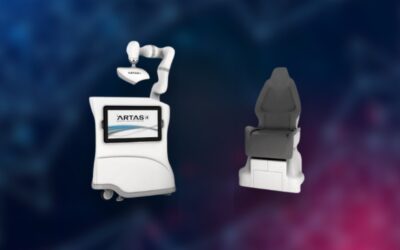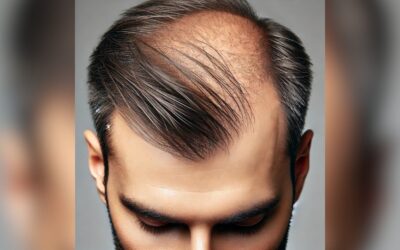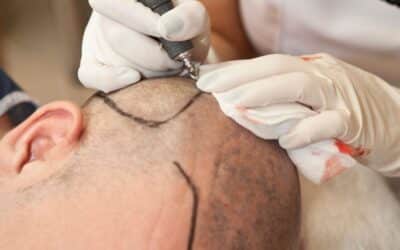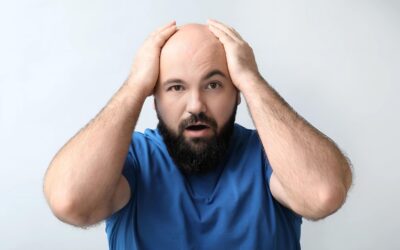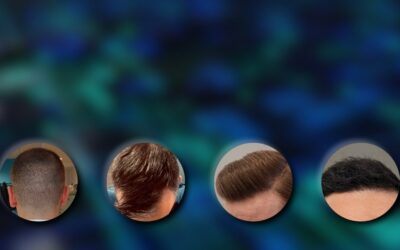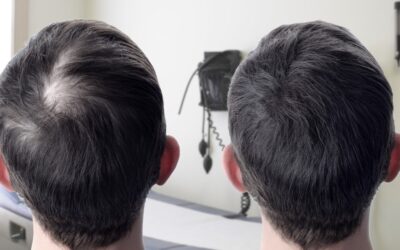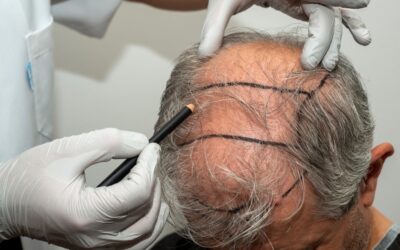The Body Hair Transplant to Scalp Procedure
Over the recent years, hair transplant surgeries have become increasingly more popular. Modern hair transplant techniques allow transplants look just like a full head of natural hair. 50 years ago, all it took was a glance and you could tell someone had a hair transplant. Now, the only telltale signs are the residual scarring from donor hair extraction for transplantation. So that brings to question if it is possible to do a body hair transplant to scalp.
If the doctor can use body hair instead of hair that is already on the scalp, then there won’t be any visible scarring. Additionally, there would be no way someone could tell a person had a hair transplant. Also, another common issue that will disqualify someone from being a candidate for a hair transplant is if they do not have any healthy donor hair on their scalp to harvest. It happens. More than you might think. And for a variety of reasons. Nevertheless, if body hair can be used as a substitute, then it could be possible for them to once again be viable candidates for a hair transplant surgery. Of course, that’s fantastic news for anyone who may have been previously excluded.
Before we get into the possibilities of a body hair transplant to scalp procedure, first we need to understand how modern hair transplants are performed and the differences between them. Then we will look at the anatomy of our hair follicles so that we can understand the difference between scalp hair and body hair and how those differences will affect a hair transplant.
Modern Day Hair Transplant Procedures
Back when hair transplants first came to the U.S., the results had a very unnatural look. This was due to the way the procedure was performed and the tools used. The old hair transplant patients ended up with large empty spaces between each hair graft, giving the scalp a very “pluggy” look. The best way to describe it would be to liken it to how the hair looks on a doll’s head. While back in the 60s, this was commonplace, and it was deemed better than being bald, it was very easy to determine if someone had undergone a hair transplant surgery.
Thankfully, back in the early 1990s Doctor Robert M. Bernstein and his colleague Dr. William R. Rassman revolutionized the hair transplant industry by getting the idea that instead of trying to transplant large chunks of hair, they would try to work with individual hair follicles. This was the invention of the Follicular Unit Transplantation (FUT) technique. FUT involves the surgeon extracting a strip of hair-bearing scalp from along the specified donor area, and then dissecting the individual hair follicles from it, with each follicle containing 1 to 4 hairs each.
This allows the surgeon to implant the individual hair follicles along the line and pattern of the naturally growing hair and much closer together than with the hair plug method. This creates a much more natural result after the transplant is completed and the scalp has healed. The FUT method leaves a long, linear scar along the donor area, which is normally near the rear and base of the skull.
The Era of the Modern Hair Transplant
Right around 2002, Follicular Unit Extraction (FUE) made its way to the United States. The FUE process differs from FUT only in the method of extraction of the hair follicles. With FUE, each individual hair follicle is extracted from the donor area using a micro-punch tool. Then the hair follicles are implanted into the recipient area of the scalp much like the FUT method.
The FUE hair transplant has become more popular than the FUT procedure because it is less invasive and doesn’t leave a long scar that is readily apparent along the base of the donor area. The FUE technique sometimes leaves small, dot-like scars along the donor area that are much less apparent than the scar left by the FUT procedure. With the FUT technique, the doctor must suture the scalp back together after the strip of hair-bearing tissue is extracted from the donor area, with the FUE method, no sutures are necessary. This makes the FUE process less invasive, and FUE also involves less post-procedure pain and discomfort.
When performing a body hair transplant to scalp surgery, the FUE method is almost primarily used due to the precise nature of the extraction process. Transplanting body hair to scalp requires a great deal more skill and experience on the part of the surgeon than a traditional hair transplant. The reason for this is the very nature of body hair in comparison with the hair that is located on our scalp.
The Different Types of Hair and Its Anatomy
Lanugo Hair
Humans have three types of hair that will grow at different stages of our lives. The first type of hair is called lanugo hair. Lanugo hair is very soft and thin with very little pigmentation to it. This is the hair that covers newborn children, and it helps keep the babies warm while they grow in the womb. Lanugo hair can sometimes develop in adults with eating disorders and certain kinds of tumors. (Lanugo, n.d.)
Vellus Hair
Vellus hair is also known as “peach fuzz.” It is the fine, thin hair that grows over most of your body. This vellus hair grows during childhood and helps protect your skin and body from extreme temperatures. Typically, vellus hair is found on your face, neck, arms, legs, and trunk.
Terminal Hair
The type of hair found on your scalp, face, armpits, and pubic regions is called terminal hair. Terminal hair grows on your scalp and makes up your eyebrows and eyelashes. After puberty, terminal hair begins to grow on your face, armpits, pubic area, chest, and abdomen. Terminal hair helps your body regulate its temperature and protects it from the sun and harmful UV rays. It also helps keep germs and debris from entering your body.
Regardless of what kind of hair it is, all hair grows from a hair follicle. The hair follicle is located in a cavity inside of the skin which contains the root of the hair. At the very base of the follicle is what is called the papilla, which is made of connective tissue and small blood vessels. The “bulb” of the hair is right under the papilla and the bulb is what is responsible for the hair follicle growing new hair.
The actual hair that we see on your head and body is what grows from the hair follicle, due to the cells that replicate in the bulb of the hair follicle. In order to transplant a hair follicle, the entire bulb must be removed undamaged, or the hair will not grow from the follicle.
How is a Body Hair Transplant to Scalp Different?
Extracting body hair for transplantation to the scalp is normally a last-case scenario due to the extreme difficulty. It is unlikely that an FUE clinic will do a body hair transplant just because the patient wishes to get rid of some unwanted body hair. Transplanting scalp hair to the scalp creates a more natural look much faster than body hair transplants.
A body hair transplant works best when there are not enough suitable, healthy hair follicles on the scalp. In other words, a lack of standard donor hair. In other cases, if the patient is suffering from late-stage baldness, there could be insufficient hair follicles on the scalp to cover the entire balding area. If the surgeon tries to only use the limited available hair follicles on the scalp, there could end up being a density issue after the procedure is completed. Nobody wants to undergo a hair transplant only to end up with thin hair.
Terminal Hair Body Hair
Only terminal hair can be used in a body hair transplant to scalp. This is because the hair on your scalp is all terminal hair. While the terminal hair on your body is the same type of hair that is on your head, it is still different. Terminal body hair is shorter and thinner compared to scalp hair, except for beard hair, which grows straighter and thicker like the hair on the scalp. This makes the hair on your beard a much better candidate for donor hair than elsewhere on the body.
Frequently, body hair nearly always curls as it grows beyond a certain length. However, if you groom and straighten the body hair regularly, it matches the terminal hair on the scalp. Body hair follicles also sit much closer to the top of our skin than the hair on our scalp, normally anchored deep in the tissue under the skin. Body hair also tends to grow out of the skin at a much more acute angle than scalp hair, which can make extracting it undamaged much more difficult. (Saxena, 2017)
Beard to Scalp Body Hair Transplant
Frequently, the hair on your beard is up to twice as thick as the hair located on your scalp. This means that it fills in twice as much volume as hair that is located on your head. Beard hair is normally much easier to harvest than other terminal body hair. Additionally, it leaves little if any visible scarring as well.
Normally, a skilled surgeon can extract up to 3000 beard hair grafts before any significant visible thinning shows. These extra 3000 hair grafts could be used in conjunction with other hair grafts extracted from a viable donor area on the scalp. Beard to scalp hair transplants are not something that’s typically part of most procedures. However, that’s not to say they’re unheard of. Not by a long shot!
Body Hair Transplant to Scalp Surgery in Los Angeles
Here at Best Hair Transplant Los Angeles, we employ some of the most skilled and experienced hair transplant experts the industry has to offer. Our FUE clinic understands the needs of our patients and are in this business to help people look and feel their best, not to just make money.
Our hair transplant specialists understand that sometimes there are situations that call for a body hair transplant and understand how to perform the extraction of body hair so that the hair transplant will be successful. A body hair transplant to scalp, due to the difficulty and the additional steps and time it takes, is always the last-ditch scenario when it comes to an FUE surgery. Our surgeons will give you a thorough examination during your consultation in order to determine just how they can perform a standard FUE transplant with a specified donor area on the scalp. Call us today to set up your complimentary consultation.
Affordable Los Angeles Hair Transplants
Best Hair Transplant is the best place to schedule your hair transplant in Los Angeles. We’ve helped both men and women regrow their lost hair. But don’t take our word for it. We suggest learning as much as possible about hair restoration. Do so prior to making a decision on how to address your hair loss. Not every procedure is right for everyone.
At Best Hair Transplant, we’re proud of our results and happy to provide hair restoration services. Additionally, we’re proud to make hair transplants affordable and help you save money on a variety of hair transplants.
YOUR HAIR RESTORATION SOLUTION
Best Hair Transplant
1970 S. Prospect Ave., Suite 2
Redondo Beach, CA 90277
(213) 403-0455
References:
- Lanugo. (n.d.). Retrieved from clevelandclinic.org.
- Saxena, K. (2017). Body to Scalp: Evolving Trends in Body Hair Transplantation. Indian Dermatology Online Journal.
- What is the structure of hair and how does it grow? (n.d.). Retrieved from InformedHealth.org.

